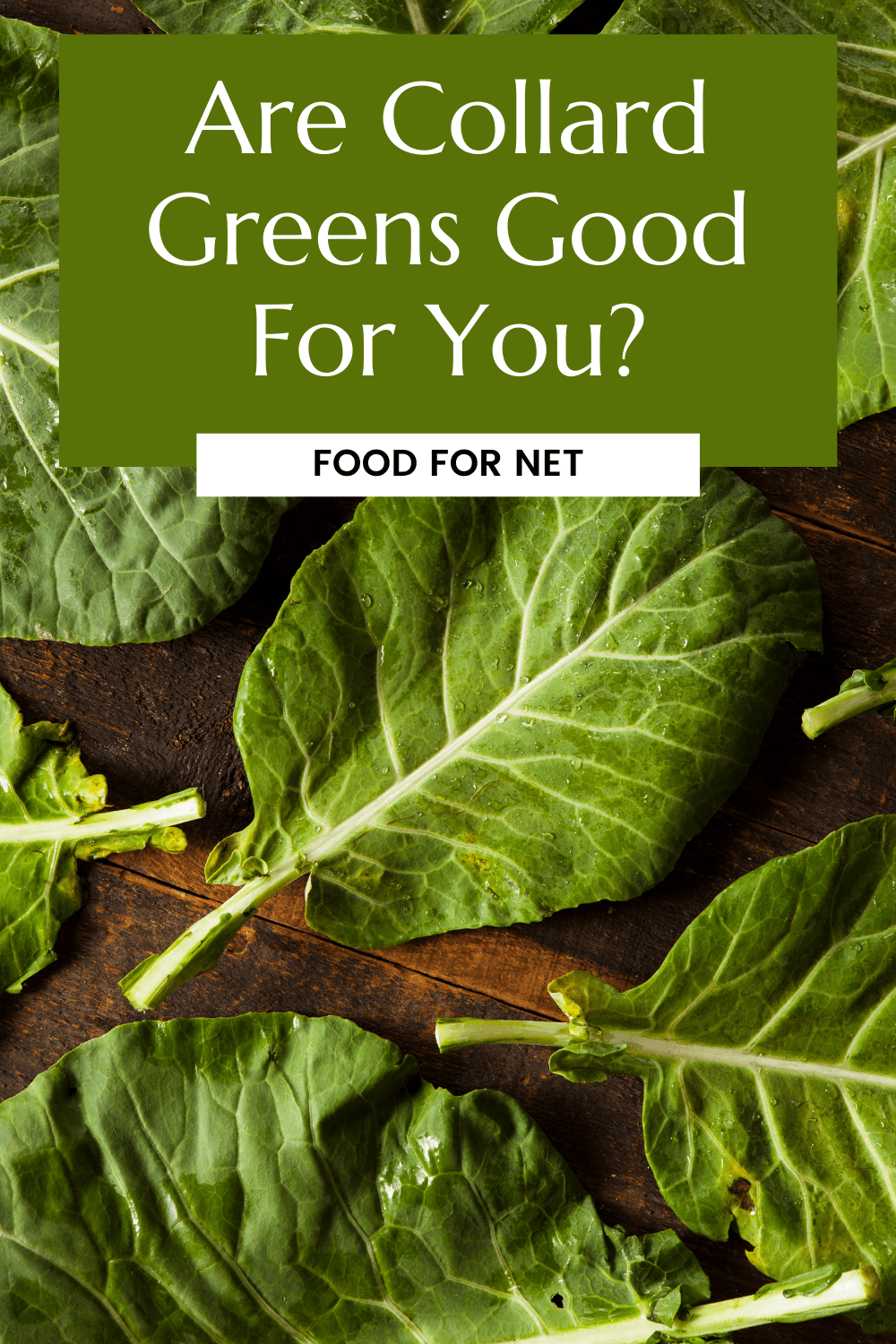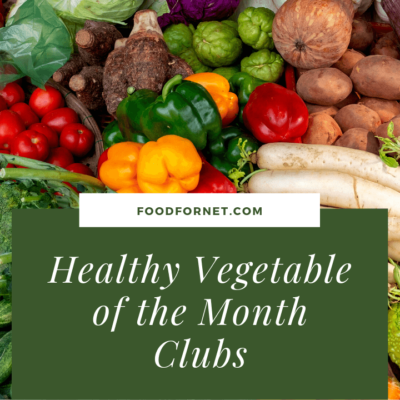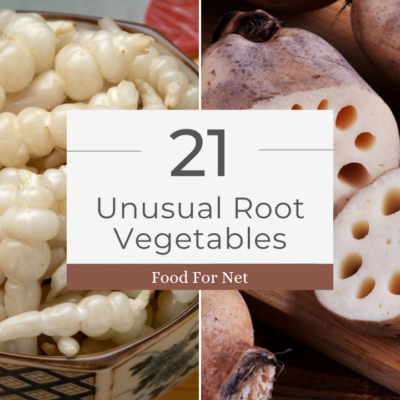
Who can deny the importance of dark leafy greens, like collard greens, kale, and spinach? Whether you love the vegetables or hate them, they have plenty going for them, including being low in calories and rich in nutrients. They’re also a very easy way to give your diet a nutritional boost, giving you the vitamins and minerals you need to stay healthy. So are collard greens good for you?
Kale has been the most famous of the leafy greens for a while, often seen as being powerful and amazing. Such claims are true enough, but other dark leafy greens have their own features. Besides, why stick with a single type of dark leafy green when there are so many to choose from?
Let’s talk about collard greens then. Are collard greens good for you? They have plenty of obvious benefits, but what lies below the surface? Let’s see whether collard greens are really as good as they first seem, along with how they compare to some of the other options. To do this, we need to begin with collard greens nutrition and move on from there.
Are Collard Greens Good For You?
- Collard Greens Nutrition
- Benefits Of Collard Greens
- How Collard Greens Could Be Harmful
- What Do Collard Greens Taste Like?
- Can You Eat Collard Greens Raw?
- Ways To Use Collard Greens
- Collard Greens Versus Kale
- Collard Greens Versus Spinach
- Final Thoughts
Collard Greens Nutrition

The nutritional profile of collard greens doesn’t look like much at first glance, as 2 cups of the raw greens just gives you this:
- 24 calories
- Carbs: 4 grams
- Fiber: 2.8 grams
- Protein: 2 grams
- Fat: 0.4 grams
The low calorie content, though, makes the greens exciting, especially once you look at the nutrients. For that same serving size, you get:
- Vitamin K: 128% of your daily value (DV)
- Vitamin C: 28% of your DV
- Folate: 23% of your DV
- Vitamin A: 20% of your DV
- Calcium: 16% of your DV
Those are just the main vitamins and minerals. There are also smaller amounts of other ones, including potassium and magnesium. Getting so many nutrients for just 24 calories is exceptional.
Benefits Of Collard Greens
A Decent Source Of Fiber
Fiber isn’t sexy. It’s most well-known for helping our digestive systems, which includes making sure we have regular bowel movements. I know, not something most of us want to talk about.
Still… this effect also shows why fiber matters so much. You start to see all sorts of unpleasant effects when you’re not getting enough of it, including bloating, low energy, inflammation, and constipation. Your blood sugar levels may become more unpredictable too and your cholesterol may increase, effects that raise your risk of type 2 diabetes and heart disease.
Do you know what’s worse than all of this? The fact that most of us don’t get enough fiber.
Seriously, some estimates say that 95% of Americans aren’t hitting their fiber targets (even though many of us probably think that we are). Fiber supplements like psyllium husk can help somewhat, but getting fiber from nutrient dense foods is even more powerful.
Collard greens are an excellent choice, as a cup of the chopped vegetable gives you around 1.4 grams of fiber. That might not sound like much, but remember that dark leafy greens tend to cook down considerably, so that cup of raw greens won’t look like much at all on your plate.
What could be easier as a way to boost your fiber intake?
They’re Low In Oxalates

Oxalates naturally occur in some foods, particularly dark leafy greens. They’re considered antinutrients and are the only type of antinutrient that offers hardly any benefits.
The biggest issue with oxalates is that they bind calcium. That calcium is then removed from our bodies as waste.
This doesn’t sound so bad, except that the process can increase our risk of kidney stones. The risk is even higher if you’ve had kidney stones in the past.
Oxalates are particularly relevant with leafy greens, as some types contain a shocking amount of oxalates. Spinach is the worst culprit here, containing more oxalates per serving than any other type of food.
Collard greens are fantastic, as they offer all the benefits you find with other leafy greens, but they’re naturally low in oxalates.
Can Improve Skin And Hair Appearance
Collard greens could even help you to look good, simply because of the vitamins and minerals present. In particular, both vitamin A and vitamin C help with your skin and hair.
The iron in collard greens may be relevant too, as this reduces the risk of iron deficiency. You can find similar nutrients in other foods, but few of them give you so many nutrients for so few calories.
Could Decrease Your Cancer Risk
Collard greens are classified as cruciferous vegetables, just like kale, spinach, and broccoli. Such vegetables contain interesting compounds called glucosinolates.
While glucosinolates are somewhat controversial, they’re thought to be highly relevant to cancer risk, helping to protect you.
Some of the glucosinolates get lost when you cook your greens, which may be one reason to focus on raw collard greens rather than cooking them.
Can Boost Your Immune System
Your immune system is how your body fights off infections, making it essential for keeping you healthy (especially these days!). The immune system is also complex, involving various proteins, cells, and organs that all interact with one another.
This complexity means there’s no single way to kick your immune system up a notch. But, eating well is an essential aspect of making sure it functions well.
Collard greens are particularly important here, as they contain vitamin C and vitamin A. These can both improve your immune system function, so that you keep on going strong.
The greens also contain a variety of important plant-based compounds, including antioxidants. Such compounds can improve your immune system as well, while reducing oxidative stress and further protecting your body.
A Good Natural Source Of Folate

All the vitamins and minerals in collard greens are important, but the folate stands out. This vitamin is particularly relevant for pregnant women, helping to lower the risk of birth defects.
In fact, dark leafy greens are one of the best natural sources of folate, making them excellent during pregnancy.
Low In Carbs
Like other dark leafy greens, collard greens are naturally low in carbs. This makes them a fantastic choice on any low carb or keto diet.
More than that, the fiber content makes collard greens simply ideal. Because a keto diet involves being ultra-cautious with your carb intake, it’s easy to unintentionally decrease your fiber intake.
Finding foods that are low in digestible carbs, but still contain a decent amount of fiber is the perfect way to stay healthy.
May Be Relevant To Your Mood Too
Finally, collard greens might just help with your mood as well.
Choline is one reason for this effect. This is used to create the neurotransmitter acetylcholine, which then plays a host of roles in your body. Getting enough choline may directly help with your mood.
Choline is relevant to sleep too – and we all know how getting a good night’s sleep helps you feel better emotionally.
The various plant-based compounds and nutrients in collard greens are relevant to your mood too. Besides, we all know that eating a balanced diet is an essential part of remaining fit and healthy.
How Collard Greens Could Be Harmful
You May See Side Effects From The Fiber
As critical as fiber is, it isn’t all fun and games. Having too much fiber or increasing your fiber intake too quickly will often give you uncomfortable side effects, including bloating, stomach cramps, and even constipation.
If you’ve simply had a little too much fiber too fast, the side effects should subside soon enough. Just make sure you have plenty of water.
Anyone with an underlying health condition should be a little more cautious. For example, fiber can reduce blood sugar levels. That’s generally a good thing, but could be dangerous for people with diabetes who are on medications that lower their blood sugar levels.
Can Interact With Blood Thinners

The vitamin K in collard greens can sometimes be a problem too, as this interferes with the action of blood thinners like warfarin. This effect isn’t limited to collard greens, as it will happen with all vitamin K rich foods.
Thankfully, there are plenty of low vitamin K foods to choose from, which should help to balance out your diet.
This interaction doesn’t mean you need to avoid collard greens entirely. Instead, the goal is simply to keep your vitamin K intake consistent. This way your medication can be adjusted to account for your diet.
You’ll need to regularly check your PT/INR levels as well. This way you’re aware of any issues early.
Could Impact Your Iodine Levels
Like other cruciferous vegetables, collard greens contain compounds called goitrogens. These may have some benefits, but they’re most famous for potentially impacting your iodine uptake.
This effect shouldn’t be a big deal if you’re healthy and are eating a balanced diet. However, if your goitrogen intake is high, it could start to impact your iodine levels, which could then have negative thyroid impacts.
Collard greens are particularly significant here, as they contain more goitrogens than many other types of cruciferous vegetables (broccoli is another major culprit).
Thankfully, goitrogens are only likely to impact your thyroid if your iodine levels are low. If you’re getting enough iodine in your diet, then collard greens shouldn’t be a big problem.
Besides, the issue only applies when your goitrogen content intake is very high. If you’re just having normal amounts of cruciferous vegetables, you probably won’t notice an effect at all.
They May Have Pesticide Residues
Pesticides are regularly used on crops, so there’s always the chance that some pesticide residues remain on your fruit and vegetables. This is even true for organic crops, as organic farmers can still use pesticides, they just can’t use the same synthetic pesticides that conventional farmers use.
These pesticides are at low levels, so they’re generally seen as being safe.
Still… there’s a lot we don’t know. We’re getting exposed to low levels of pesticides through our food day after day, month after month, year after year. No one really knows how this influences our health.
There could easily be small and subtle negative effects that grow through our lifetime and are difficult to spot right now.
Buying organic produce can help, as the pesticides used here aren’t synthetic, so they should be much safer. Because organic food is expensive, it’s best to pick and choose which foods you buy organically.
Collard greens are one of those vegetables that you should be buying organic if you possibly can. They were a new entry on the EWG’s Dirty Dozen list in 2021, which highlights the fruits and vegetables that are most contaminated with pesticides. As such, collard greens can be quite high in pesticide residues, even once they’ve been washed.
What Do Collard Greens Taste Like?
The first thing you’ll notice about collard greens is their bitter flavor. This is distinctive, but it isn’t quite as bad as the bitterness of kale.
Cooking decreases this bitterness, giving you a mellower vegetable that works well in many dishes. Adding a little salt and lemon juice while cooking helps reduce the bitterness even further.
Can You Eat Collard Greens Raw?
Collard greens are often cooked before being eaten, simply because of their bitterness. However, you can still eat them raw. They’re sometimes used in salads rather than lettuce or perhaps in a wrap.
If you are going to use them raw, try massaging the leaves first. Doing so gives the greens a softer texture and makes them easier to use.
Ways To Use Collard Greens

Collard greens are surprisingly simple. You can use them in much the same way as any other dark leafy green. This includes adding them to a salad, rolling them up in a wrap, using them in a stew or a soup, putting them in a casserole, or pretty much anything else you can imagine.
You can even make chips from collard greens, just like kale chips.
Don’t be afraid to experiment either. You’re certain to find new uses of collard greens as you go.
Collard Greens Versus Kale
Kale has become somewhat of a fad and is often seen as the single healthiest dark leafy green. There’s some merit to the claim too, as kale is richer in nutrients than most other leafy greens, including collard greens.
In particular, kale provides you with more iron, vitamin K, and vitamin C than collard greens. The iron is an important feature, given that iron deficiency in the United States is more common than you might expect. Levels of other nutrients are similar regardless of whether you choose collard greens or kale.
The nutritional differences make kale a slightly more powerful leafy green. Honestly though, the difference isn’t dramatic. You’re going to get plenty of health benefits from either type. And, if you’re already getting enough iron in your diet, then the health effects are going to be roughly the same either way.
Collard Greens Versus Spinach
What about spinach and collard greens then? Both of these leafy greens are packed with nutrients, although once again spinach is a better source of iron, vitamin K, magnesium, and some other nutrients.
However, collard greens win out in some ways too. For one thing, collard greens are much higher in fiber. Collard greens are also lower in oxalates, while spinach is shockingly high in oxalates. The oxalate difference suggests a need for caution with spinach. You don’t need to cut the leafy green out, but it’s best not to have large amounts every day.
Which is best then, kale, collard greens, or spinach? If you’re looking for the highest amount of nutrients per serving, then kale still wins out.
Yet, this difference doesn’t mean much at all in practice. You’ll get plenty of nutrients from any type of dark leafy green. The best approach may just be to use a variety of different fruits and vegetables, giving you access to the widest range of benefits.
Final Thoughts
Collard greens are a low calorie leafy green vegetable that’s rich in nutrients, fiber, and antioxidants. What’s not to love?
Beyond this, we know that diets rich in fruits and vegetables are incredibly healthy and lead to many benefits. In fact, eating fruits and vegetables regularly is one of the most powerful ways to promote your health.
Do collard greens stand out? In some ways, no, not really. They have similar benefits and risks as most other dark leafy greens.
This doesn’t matter though. You don’t need to focus on the best possible ingredients to improve your health. Instead, relying on whole foods, including plenty of fruits and vegetables, is a healthier and more interesting approach.
Frequently Asked Questions
Are Collard Greens Keto?
Like other dark leafy greens, collard greens are excellent for keto dieters. In fact, a cup of the greens often contains less than 1 net gram of carbs, which is seriously impressive.
Collard greens are also an exceptional source of nutrients and fiber. These are both valuable features, especially as it’s easy to have low fiber intake on a keto diet.
How Many Calories Are In Collard Greens?
Leafy greens are always low in calories, which makes them an exceptional weight loss tool. In particular, a cup of boiled collard greens contains just 63 calories. It’s hard to get better than that.
Are Collard Greens High In Potassium?
Collard greens do contain potassium, with a cup of the cooked greens containing around 222 mg of potassium. This isn’t as much as it sounds, as your daily potassium target is around 4,700 mg.
There are also plenty of more powerful sources of potassium, including bananas (420 mg in a medium banana), potatoes (900 mg in a baked potato), and guava (350 mg in a half cup serving).
Are Collard Greens Low FODMAP?
Yes. Even a full cup of cooked collard greens contains just trace levels of FODMAPs. As a result, almost any serving size should be safe for people with IBS.
Can Diabetics Eat Collard Greens?
Diabetics can certainly eat collard greens and should be doing so regularly. After all, the greens contain plenty of fiber, are packed with nutrients, and have a low glycemic index. They’re a fantastic addition to your diet, whether you’re a diabetic or not.

















 5 Best Zero Carb Protein Powder Brands
5 Best Zero Carb Protein Powder Brands
Kale, collard greens as well as spinach is filled with potassium. If your kidneys are not at 100% these items as well as Orange is, bananas, white potatoes, sweet potatoes, brand, oats, okra and more will further damage them